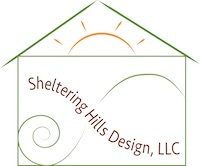The Moment in which We Live
One of the challenges, as we have gone online is that our social evolution is on the surface. I interact with people from around the world on an almost daily basis via zoom. While the interactions with people are spread out, they are also shallower. Our mission-driven interactions allow for some connection and understanding, but there isn’t often time to build deeper connections and cultural practices which really nurture relationships and networks. In a world of 15-second Tiktok videos, how do you develop connection to a shared vision?
Our ecological and social systems are beyond the limits and collapse is underway. Collapse has been affecting people; destroying and destabilizing whole sections of population for most of my adult life. What we are talking about now is the level of acceleration. Extractive behavior continues—putting financial and social capital in the hands of the privileged. People are both distracted by social media and other entertainment and utilizing an online context to reorganize their lives and connections so that power and resources can be distributed more fairly to meet the needs of the Earth and people. Neither focusing on negative realities and despair nor toxic positivity and denial is helpful. The pandemic has given us all a moment to wake up and re-evaluate what is critically important—as well as to see the delicate situations we are in.
So, what are we to do?
Cellular Boundaries
Who is the “we” in that question? Permaculture people, readers of this article, family members, activists, and members of organizations. Community members. Business owners. Staff or employees. In each role, or context, we have the capacity to work from principle and pattern toward common vision. Those contexts need relatively stable boundaries. A consequence of our globally connected world—and especially the past the wealth of the past 30 years in the US and other affluent countries—is that people have been able to move where they like far from family and friends. That has been positive in many ways but limited our direct experience of community around us as well. We are lonelier and suffering more mental health issues than ever before. (Hence, projects like the Human Library.)
One of the challenges and wonders of our current world is that it is so very accessible. By nature, we define ourselves and our lives by the people with whom we have regular contact. Those are the people we are invested in. As permaculture people, we want to design systems that improve our quality of life and the lives of those we connect with. In terms of changing the world, when we put intention and choice into our systems, it can send a positive ripple out through the whole—and when many of us do this, it can rapidly change the nature of our world in a positive way. So, who is your “we”? Who do you want to design with? Who do you share a vision or mission or dream with?
Many times, we don’t get to choose everyone in our groups and collaborations. Friends of friends show up, or people respond to a call to action. A variety of perspectives are introduced. Each person has some valuable experience or question to bring to the conversation. Once we know who we are co-creating a future with—allowing for shifts and changes as life demands—we can then find the common threads and themes of our vision.
Collective vision and a strong container
Once we know who “we” are and what we are working for, we define both the limitations and problems we need to solve, and the immediate and long-term aims implied in our vision. In 2016, at the North American Permaculture Convergence in California, I was sitting in one of many delightful, long conversations with Bonita Ford. It became clear in the conversation that we have an endless supply of good technical and design solutions to our ecological problems. However, projects fall apart over lack of ability to sustain them (financially and energetically) and old, internalized patterns of oppression and communication which feed conflict and foster differences. People leave relationships or projects and move on to something new. In a world with many options, that is perhaps for the better. But in a world of increasing constraints, moving on may not be as much of an option. (I have spoken of this concern several times in articles Permaculture Design.) In this case, we need more careful and skillful design of our social worlds to creatively respond to the moments we are in. Once our personal and social lives are more in balance, our built structures and ecological worlds are more likely to reflect this health. I’ve spoken elsewhere about personal balance and design for self-care. In the next post, I want to focus on social design and, specifically, about how sociocracy blends with permaculture in a positive way to create strong containers for our collective vision.
This post is an excerpt from the Spring 2022 issue of Permaculture Design magazine, which Rhonda edits. You can find out more about effective governance from her free workshop on March 22, or from visiting Sociocracy For All.
